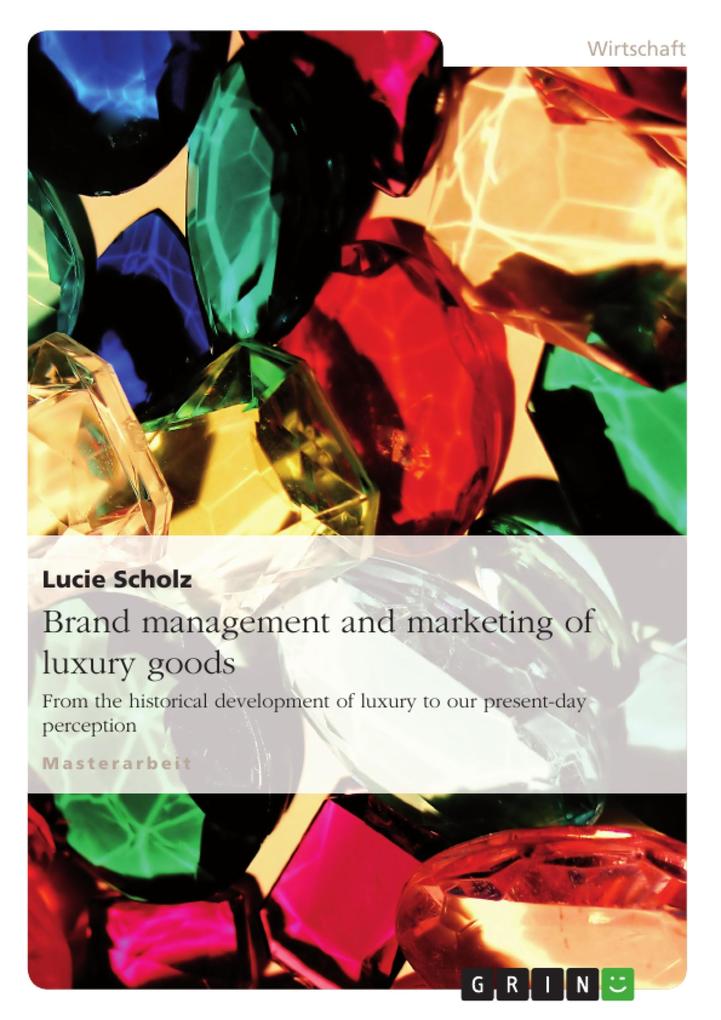
Sofort lieferbar (Download)
Master's Thesis from the year 2011 in the subject Business economics - Offline Marketing and Online Marketing, grade: 1, 3, University of Applied Sciences Neu-Ulm , language: English, abstract: Luxury as is the case with most abstract notions has a somewhat floating and mercurial character. It has undergone considerable changes during the last centuries (Kapferer 2008; Lasslop 2005; Valtin 2008) and there are good reasons for supposing that the concept will be subject to changes in the future as well.
Luxury finds its expression in tangible products or services and there is a huge industry which caters to the needs of those who can afford the ultimate in price and quality. We will try and analyse the ways and means with which luxury goods succeed in finding or defending their position in this highly competitive market (Strauss 2011: online).
In order to better understand the concept of luxury in our time it is useful to highlight some historical and economic factors which have contributed to the shaping of our present-day perception without attempting an in-depth historical or sociological analysis.
Luxury finds its expression in tangible products or services and there is a huge industry which caters to the needs of those who can afford the ultimate in price and quality. We will try and analyse the ways and means with which luxury goods succeed in finding or defending their position in this highly competitive market (Strauss 2011: online).
In order to better understand the concept of luxury in our time it is useful to highlight some historical and economic factors which have contributed to the shaping of our present-day perception without attempting an in-depth historical or sociological analysis.
Produktdetails
Erscheinungsdatum
06. Februar 2012
Sprache
englisch
Seitenanzahl
91
Dateigröße
7,00 MB
Autor/Autorin
Lucie Scholz
Verlag/Hersteller
Kopierschutz
ohne Kopierschutz
Produktart
EBOOK
Dateiformat
EPUB
ISBN
9783656120728
Entdecken Sie mehr
Bewertungen
0 Bewertungen
Es wurden noch keine Bewertungen abgegeben. Schreiben Sie die erste Bewertung zu "Brand management and marketing of luxury goods" und helfen Sie damit anderen bei der Kaufentscheidung.









